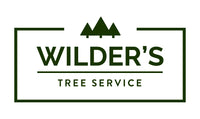New England's diverse and lush landscape is home to a wide variety of tree species, providing beauty, shade, and ecological benefits to the region. However, trees in this area are also susceptible to various diseases that can impact their health and vitality. Identifying and understanding common tree diseases is crucial for early detection and effective treatment.
In this blog post, Wilder's Tree Service will highlight some prevalent tree diseases to watch out for in New England, enabling homeowners to protect their trees and preserve the natural beauty of the region.
-
Dutch Elm Disease: Dutch Elm Disease is a devastating fungal infection that affects American and European elm trees. It is spread by elm bark beetles and causes rapid wilting, yellowing, and browning of leaves, ultimately leading to tree death. Early detection and prompt management are vital to prevent the spread of this disease.

Image by Ptelea -
Apple Scab: Apple Scab is a fungal disease that affects apple trees and other fruit trees, including pears and crabapples. It causes dark, scaly lesions on leaves, fruit, and twigs, leading to defoliation and reduced fruit quality. Proper sanitation and regular fungicide applications can help control and manage this disease.

Image by Shuhrataxmedov -
Beech Bark Disease: Beech Bark Disease is a combination of two pathogens: a scale insect and a fungal pathogen. It affects beech trees, causing bark cankers, bark cracking, and overall decline. Infected trees often suffer from reduced vigor and are susceptible to secondary pests and diseases.

Image by U.S. Department of Agriculture Forest Service - U.S. Department of Agriculture Forest Service -
Oak Wilt: Oak Wilt is a fungal disease that primarily affects oak trees, including red oaks and white oaks. It causes wilting, browning, and leaf drop, ultimately leading to tree death. The disease spreads through root grafts and insect vectors. Early detection, sanitation, and preventive measures are crucial in managing and containing this disease.

Image by Wood Geek -
Needle Cast Diseases: Needle Cast Diseases are fungal infections that affect coniferous trees, such as spruces and firs. They cause the browning and premature shedding of needles, leading to overall tree decline. Proper pruning, improved air circulation, and fungicide treatments can help control these diseases.

Image by USDA Forest Service - Forest Health Protection - St. Paul Archive's Images -
Anthracnose: Anthracnose is a fungal disease that affects a wide range of deciduous trees, including maples, oaks, and sycamores. It causes irregular leaf spotting, defoliation, and cankers on branches. Proper sanitation, pruning of infected branches, and appropriate fungicide applications can help manage and prevent the spread of this disease.

Image by Markus Hagenlocher -
Fire Blight: Fire Blight is a bacterial disease that primarily affects apple and pear trees, but it can also impact other members of the Rosaceae family. It causes wilting, blackening, and cankers on branches, giving them a scorched appearance. Prompt pruning of infected branches and proper sanitation are key to controlling this disease.

Apple tree with fire blight; Image by I, Paethon
Being aware of common tree diseases in New England is crucial for preserving the health and beauty of your trees. Regular tree inspections, early detection, and appropriate management strategies are essential in combating these diseases.
If you notice any signs of disease in your trees, it is recommended to consult with a professional tree service like Wilder's Tree Service for accurate diagnosis and effective treatment. By staying vigilant and proactive, you can help protect your trees and ensure the longevity of New England's cherished arboreal landscape.

